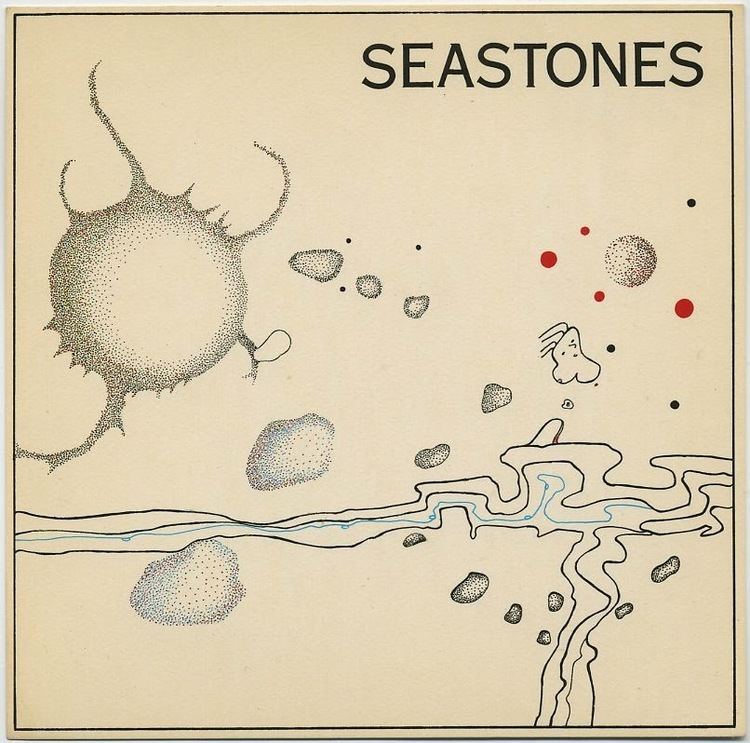Recorded February 1975 Length 44:40; 73:39 Release date 1975 | ||
 | ||
Released April 1975; re-released 1991 Songs The December 1975 Version, The Original February 1975 Version Similar Rolling Thunder, Tales of the Great Rum Runners, Dave's Picks Volume 17, Keith & Donna, Diga | ||
Grateful dead w ned lagin seastones 9 11 74
Seastones is an album by American composer and musician Ned Lagin.
Contents
- Grateful dead w ned lagin seastones 9 11 74
- Ned lagin sea stones 1975
- Composition
- Production
- Critical reception
- Personnel
- References
In 1975 Lagin released the quadraphonic album of electronic music, part of his composition entitled Seastones, on Round Records and then United Artists Records.
Ned lagin sea stones 1975
Composition
Seastones is an open form mobile composition of compositions (moment forms, sections), conceived as an open mobile form before non-linear (random access) digital media came into existence. Open form in that new live performed moment forms become "accreted" or added to, and become part of, the full composition. Seastones is a collection of pre-compositional philosophies (reflection and spontaneity, formalism and intuitionism, composition and improvisation) and the compositional practices and technologies of the time (analog, digital, hybrid analog-digital control, FM, sequencer, musique concrete, found, mathematical, quad spatial immersive, biomusic, aleatoric, noise, random, and generative). It was played and performed with acoustic, electric, and electronic instruments (synthesizers, computers), and voice.
Seastones reflects the culture of the time - the contrasting worlds of scientific and technological optimism, war (Vietnam) and social change, and new world views combining environmental and spiritual consciousness.
The music forms of the Seastones moment form compositions are not only historic and conventional music forms but forms that are like natural processes and places. Lagin imagined metaphors for music creation derived from geology and natural history and biology, electronics and electricity, physics and quantum mechanics, radio and television and movies, as well as from other creatures. The open mobile form of Seastones was inspired by real sea stones seen all at once on the beach:
Whenever I walk along the beach... I find myself, like so many others, picking up stones and pebbles cast up or uncovered by the waves. ... Each one different, with its own shape, and color, and surface texture. And each charged with its own mystery and meaning, its own storied experience ... From the wild sea stones I learned ... that beauty could come from a collection of carefully selected (or crafted) moments perceived not as a linear sequence or progression alone, in which the present moment is the consequence of the previous one and the prelude to the coming one, but perceived all at once.
Seastones was called by some as "electronic cybernetic biomusic." Lagin's concepts of biomusic as expanding concepts of music and sound, composition and frameworks for improvisation date from 1969-1970. They include what is now called ambient music, and in particular the music of other creatures and nature, music as something shared with other forms of life. He also conceived of biomusic as the hearing and feeling of sound and music through the body, the physiological effects of music on body and mind and heart (feeling as meaning), and using body electric fields to create sounds or to modify or modulate sounds.
The Seastones vocals and sung words have musical influences (using voice as an instrument and timbre) from Claude Debussy, Maurice Ravel, György Ligeti, and Krzysztof Penderecki, and from the sonorities and symbolic counterpoint of Renaissance polyphony; and literary influences that include James Joyce (Finnegans Wake and Ulysses), William Faulkner, W. B. Yeats, T. S. Eliot, e e cummings, and others.
Lagin composed Seastones over the course of five years. It was recorded and mixed in just as many studios, and mastered at a sixth. Much of the album consists of electronically processed traditional instruments and voice, and a cadre of synthesizers (a custom E-mu Modular Synthesizer controlled by and processed through then-cutting-edge computer technology, with software patches and compositions by Lagin; an ARP 2500 and ARP 2600; and a Buchla Modular System). The early computers employed by Lagin included an Interdata 7/16 computer with a high speed arithmetic logic unit and magnetic core memory; an Intel 8080 microprocessor system built by Lagin; and at the beginning of 1975 an Altair 8800. The computer-controlled systems was designed and built for group live performance, with the performers instruments and voices routed through analog and digital synthesis and processing hardware. Seastones was one of the first commercially released recordings to feature the use of digital computers, and Lagin was the first to perform on stage live with computers. It was also a very early instance of multiple musicians' audio and control signals being interconnected before MIDI.
Production
The album was mixed in quadraphonic sound, released in quad-encoded stereo, and featured guest performances by members of the Grateful Dead, including Jerry Garcia playing processed electric and pedal steel guitars, and voice; Phil Lesh playing electronic Alembic bass; and Mickey Hart on processed percussion. David Crosby (processed voice and electric 12-string guitar), and members of the Jefferson Airplane Grace Slick (processed voice), Spencer Dryden (processed percussion), and David Freiberg (processed voice) also appear on the album.
There were five live performances of Seastones: November 28, 1973, June 6, 1975, September 19, 1975, November 15, 1975, and November 22, 1975.
Seastones was re-released in stereo on CD by Rykodisc in 1990. The CD version includes the original Round Records nine-section Seastones (42:34) from February 1975, and a previously unreleased, six-section version (31:05) from December 1975. Both are partial versions of the full composition, which has not been released. Other unreleased Lagin Seastones-related compositions from the same period include L and Make a Cat Laugh.
Critical reception
On Allmusic, Steven McDonald said, "In short, Seastones is electronic music of the best kind — a shifting sonic landscape out of which the strangest things may emerge."
